Corn Rootworm Issues and Importance
- Four species of adult corn rootworms can affect kernel fertilization
- Adult corn rootworms feed on green silks and can prevent silks from capturing pollen
- In commercial corn fields, large beetle populations (≥ 20 per plant) are necessary to cause economic damage and to justify an insecticide application
- In seed production fields, as few as 1 to 5 beetles per plant feeding on green silks and kernels can reduce seed quality and grain yield (see economic thresholds section below)
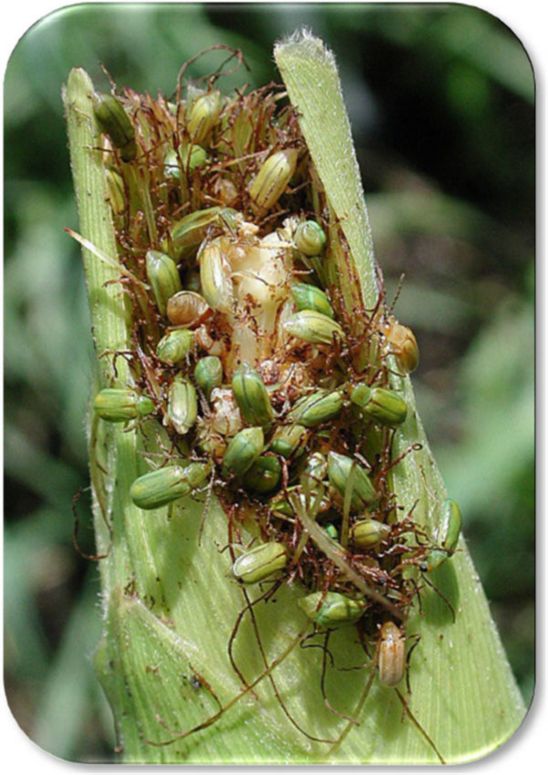
Northern corn rootworms feeding on silks and kernels
Injury and Pest Symptoms
- Adult corn rootworms feeding on green silks and immature kernels:
- reduce number of kernels per pound
- reduce number of kernels per acre
- increase round kernel fractions
- decrease flat kernel fractions
Interesting Fact: Adult western corn rootworms live an average of 52 days (maximum 86) in the field
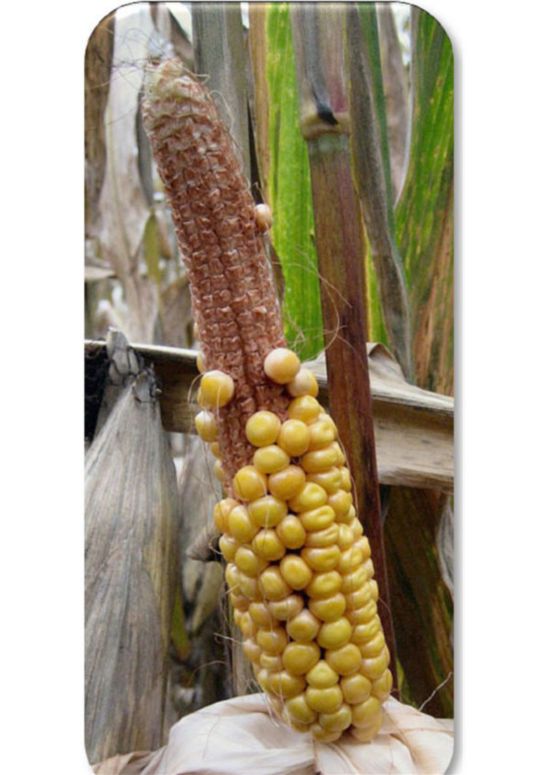
Silk clipping by adult corn rootworms reduces kernel number; in seed
production fields this increases round kernel fractions
Adult Corn Rootworms
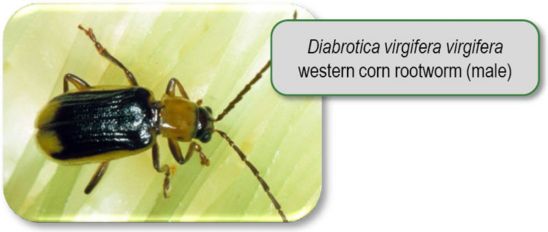
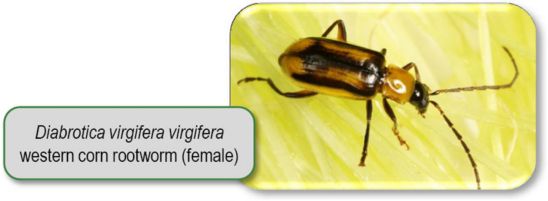
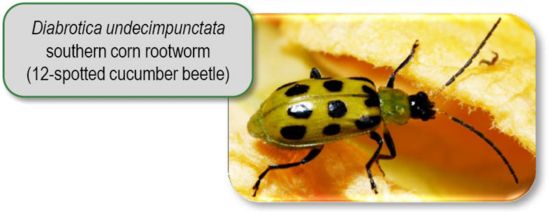
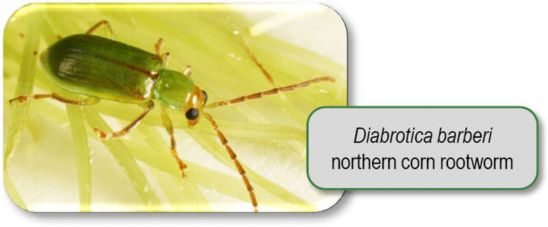
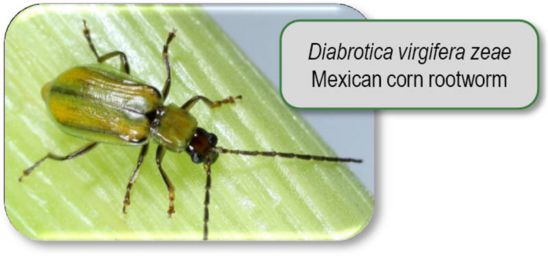
Corn Rootworm Economic Thresholds*
- Hybrids (commercial production fields)
- To justify the cost of chemical control and application:
- Average of 20 beetles per plant, or
- Silks clipped back to within ½ inch of husk prior to 50% pollen shed
- Inbreds (seed production fields)
- Plants drought or heat stressed
- 1 to 3 beetles per plant feeding on green silks
- Plants with optimum moisture and moderate temperatures
- 5 beetles per plant feeding on green silks
- Plants drought or heat stressed
*Reference: Culy, Edwards & Cornelius. 1992. Journal of Economic Entomology 85: 2440-2446.
Integrated Pest Management
- Crop Rotation
- Rootworm populations can be greatly reduced with rotation (except western corn rootworms in the “Red Zone” of northern Illinois and the southern corn rootworm in the southern U.S.)
- Planting Time
- Plant early; late-planted and late-silking fields, (even first-year corn fields), can attract large numbers of beetles from neighboring fields
- Bt Corn
- Hybrids and inbreds expressing a corn rootworm Bt trait will greatly reduce the number of larvae that survive to the silk-feeding adult stage; Bt corn does not affect the adult corn rootworms
- Insecticides
- Numerous broad-spectrum and long-residual insecticides are labeled for beetle control
Photos¹ and Text
Marlin E. Rice, Pioneer,¹ corn ear by Mark Jeschke
Reviewed by Tim Nowatzki, Mike Rupert and Jeff Schussler
